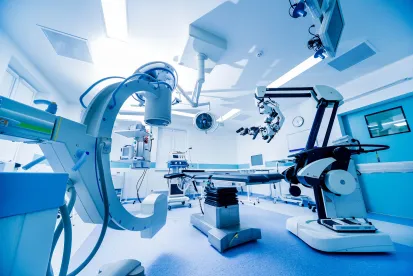Sophisticated clinical software systems employed in specific health care services have graduated from being interfaces, operating systems, and subordinate tools that support physical medical devices and have matured to the point that they themselves are now classified as medical devices and referred to as Software as a Medical Device (SaMD).
These software-based interventions are expected to expand patient access, improve physician workflow, reduce payor costs, and improve clinical outcomes for patients. However, the introduction of SaMD and other digital therapeutic technologies into the health care system raises unique regulatory questions in their implementation and commercialization.
In this fifth installment of this blog series on SaMD, we discuss (1) reimbursement challenges; and (2) state regulatory considerations/challenges applicable to companies offering SaMD products. Until such time as there are more direct paths to reimbursement and clarity on regulatory considerations related to dispensing SaMD, such as medical device distributor licensing, the deployment of SaMD in more traditional health care settings may continue to be limited.
Reimbursement Challenges
One of the challenging hurdles slowing widespread access and expansion of SaMD-based tools is the lack of national insurance coverage. While some SaMD tools can be utilized under pre-existing codes such as remote physiologic monitoring or remote therapeutic monitoring codes, there currently is a lack of a clear pathway for separate reimbursement for the use of SaMD products themselves. (Read more about Remote Therapeutic Monitoring (RTM) and Remote Patient Monitoring (RPM) rules here and here).
This is partly because the use of SaMD tools by patients at the recommendation of their physician do not readily fall under any Medicare or other payer benefit category. While some seek to fit them into existing drug or device paradigms, others liken them more to durable medical equipment. Consequently, the road to reimbursement by Medicare for SaMD has been long, arduous, and relatively limited. Indeed, the median time from marketing authorization to coverage under the Medicare program is nearly six years for novel medical diagnostics and devices, according to a cross-sectional study from researchers at Stanford University.
That said, despite the longer path to traditional reimbursement, some progress has been made. For example, last year the Centers for Medicare & Medicaid Services (CMS) introduced a new billing code for prescription digital behavioral therapy (A9291), which although does not provide separate Medicare payment and coverage, is a step in the right direction. Additionally, through its proposed 2024 Medicare Physician Fee Schedule, CMS is seeking comment on the effectiveness of and information related to SaMD and digital therapeutics. Finally, from a legislative perspective, earlier this year the Access to Prescription Digital Therapeutics Act of 2023 was introduced which, if passed, would create a new Medicare benefit category for prescription digital therapeutics.
While the SaMD industry continues to push for improved payment policies for SaMD from CMS, in parallel, companies offering SaMD may still find revenue opportunities with direct to consumer (DTC) models, business-to-business (B2B) self-insured employer arrangements, and B2B custom-negotiated partnerships with payors and pharma companies. Until more mainstream payors like CMS begin to cover SaMD, these DTC and B2B approaches for reimbursement will remain the only viable path for SaMD to receive direct reimbursement.
State Regulatory Considerations and Challenges
Reimbursement issues aside, organizations and health care providers implementing SaMD tools into the care setting also must be cognizant of complex and varied state rules related to the manufacturing, marketing, dispensing, and prescribing of a medical device.
For example, FDA regulatory approval often entails that the SaMD can be provided to a patient only upon a valid prescription from a licensed health care provider. Thus, patient access to SaMD tools rely heavily on the acceptance and knowledge of health care providers. Companies offering SaMD often will look to educate and establish relationships with health care providers who can issue prescriptions for such SaMD products and streamline patient access. Such partnerships must be carefully reviewed to ensure they are structured to comply with applicable health care fraud and abuse laws (e.g., fee-splitting, anti-kickback, and self-referral prohibitions).
Additionally, many states require licensure for distribution of medical devices (particularly prescription devices) which in many instances could also apply to SaMD. Most of these state laws were written years ago and do not contemplate a world in which the medical device is not a physical product; but rather consists of intangible software that is downloaded by the end user. Thus, SaMD manufacturers, resellers, distributors, third party logistics providers, pharmacies, and others must carefully assess their delivery models to what state licenses and approvals might be required. Until such time as state/federal regulators make clear that SaMD either is or is not subject to the same licensure frameworks as more traditional medical devices, SaMD adoption will also be challenged by the lack of regulatory clarity in how to dispense the products compliantly on a national basis.





 />i
/>i

